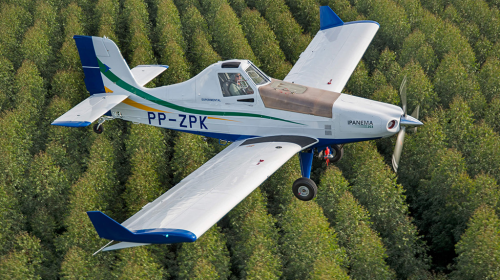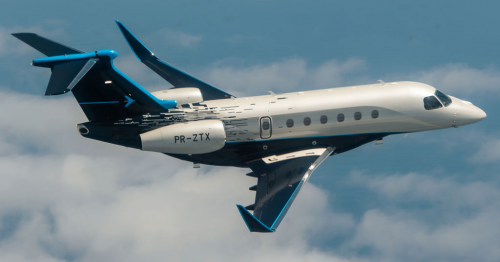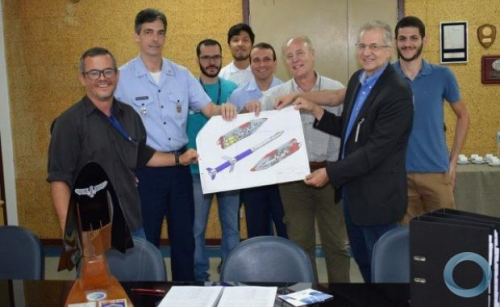Chihuahua has 25% of aeronautical plants
They operate with 98 percent of engineers born in the state
Samara Martínez and Adriana Saucedo / Photographs: Alberto Hierro
Chihuahua, Chih.- Chihuahua has established itself as one of the largest in the aviation industry nationwide, since with 25% of aerospace plants in the country, the state serves as a national example, as the capital is within the First ten cities worldwide in strategy of attraction of investments and competitiveness of costs in the field, as explained by the Intelligence Unit of the British newspaper Financial Times.
The aeronautical industry of Chihuahua has an exponential growth, because despite its youth it has achieved, in less than a decade, to position a competitive and quality structure worldwide, according to Luis Lizcano, general director of the Mexican Federation. of the Aerospace Industry (Femia).
In the global scheme, Mexico is ranked number 12 in exports worldwide, developing in the country all areas of an aircraft, from landing gear, turbines and interiors, to structures and maintenance, taking into account that of the 300 industrial facilities that are in the country, most are located in the states of Baja California, Sonora, Nuevo Leon, Queretaro and Chihuahua.
According to Tania Espinoza, from the Chihuahua Aircraft Cluster, the state currently has 40 operations, which generates a large number of jobs for Chihuahua, as the president of the Aerospace Cluster, René Espinoza, says that 98% of its engineers are local.
I
n Chihuahua, the Aerospace Cluster has generated more than 17 thousand jobs since 2008, and currently exports more than 1,500 million dollars annually. In addition, the state ranks second in cumulative foreign investment from 2013 to 2018, which was 331 million dollars.
One of the aerospace companies in the state is Fokker / GKN Aerospace, which is a success story of the Chihuahua industry, since it manufactures aerospace parts from Gulfstream, Cessna, Airbus, Dassault, Boeing aircraft and exports to the United States, Canada and some countries. of Europe. Currently, Fokker Chihuahua has about 150 employees and contemplates the construction of a new plant in the city for the following year.
Another great operation where turbine components are manufactured is Honeywell Aerospace, with more than 1,140 machines and equipment installed. Likewise, Bell Helicopter, assembles 60 percent of the Bell 407 and 429 helicopters and the companies Cessna and Beechcraft, known today as Textron Aviation, assemble a large part of the fuselage of its various aircraft models.
On the other hand, last February the National Council of Science and Technology (Conacyt) invested 143.5 million pesos for the creation of seven specialized laboratories for the aerospace industry, of which one will be in Chihuahua in charge of the Chihuahuan company HT -MX
The education sector is another reason why the state excels in the aeronautical industry, since four international quality universities are located in the territory, offering careers focused on preparing professionals in the aeronautical industry with different job profiles, from the mechanics to interior design and airport management.
During the last years, Chihuahua students have stood out, representing Mexico in international competitions, demonstrating their skills to students from universities in India, the United States, Canada and the United Arab Emirates. In addition, the Innovation Park of Universidad La Salle Chihuahua maintains a collaboration with the company Soisa Aircraft Interiors, dedicated to the design and manufacture of interiors, with which the Ergonomic Simulation Laboratory was created to evaluate the comfort of the passenger when using the cushions of aircraft, designed and manufactured by the company Soisa.
THE ESTABLISHED COMPANIES:
· Honeywell
· Cessna
· Beechcraft
· Bell Helicopter
· EZ Air, which develops a project together with Embraer and Zodiac
· Fokker GKN Aerospace Mexico
PRODUCTS AND SERVICES THAT PROVIDE:
· High precision machining
· Harnesses
· Seats
· Aeroparts
· Aerostructures
· Slides and rafts
· Thermal treatments
· Turbines
CHIHUAHUA IN THE NATIONAL SCHEME
The aerospace industry in Mexico (location and distribution)
Source: General Directorate of Heavy Industries and High Technology and FEMIA
· Sonora (48)
· Chihuahua (30)
· Coahuila (7)
· Nuevo León (30)
· Tamaulipas (11)
· San Luis Potosí (5)
· Querétaro (38)
· Yucatán (3)
· Puebla (2)
· Hidalgo (1)
· Mexico City (10)
· State of Mexico (11)
· Guanajuato (3)
· Jalisco (10)
· Aguascalientes (1)
· Zacatecas (1)
· Durango (1)
· Baja California (58)
AERONAUTICAL EDUCATION IN CHIHUAHUA:
· Autonomous University of Chihuahua, Aerospace Engineering.
· Polytechnic University of Chihuahua, Aeronautical Engineering. Students represented Mexico in the Supermileage, organized by the Society of Automotive and Aeronautical Engineers (SAE), which will be held in June 2019 in the city of Marshall, Michigan, competing against universities in the United States, Canada, Lebanon, Emirates Arabs and Qatar.
· Universidad Regional del Norte, Chihuahua campus, Bachelor in Management and Administration of Airports and Air Business.
Taught in collaboration with Airports and Auxiliary Services, through its International Training Center (CIIASA)
· Autonomous University of Ciudad Juárez, Aeronautical Engineering.
A total of 15 students represented Mexico in the SAE Aero Design, in the international stage.
· La Salle University, Chihuahua.
The Ergonomic Simulation Laboratory was created to evaluate the comfort of the passenger when using the airplane cushions, designed and manufactured by the company Sois Aircraft Interiors.
https://www.periodicoelmexicano.com...uahua-25-de-plantas-aeronauticas-3352425.html




www.reuters.com
